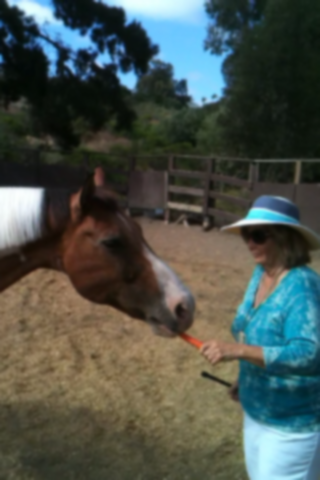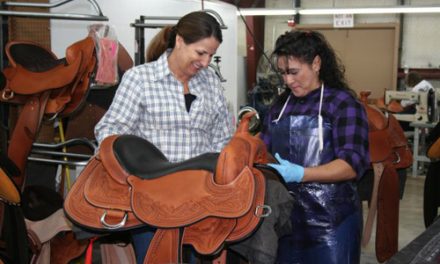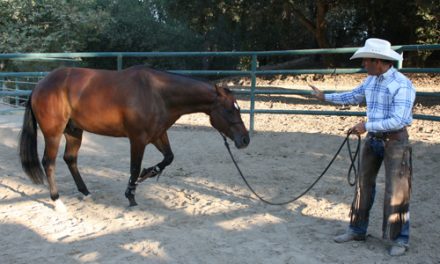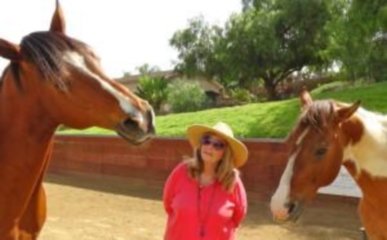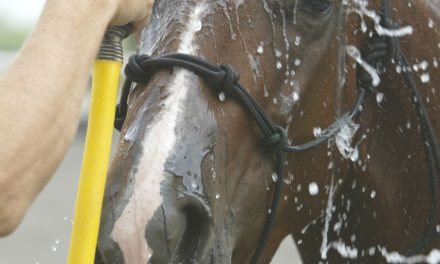 What a wonderful response to my last blog where I asked the question – “what do you consider to be rude behavior in a horse”.
What a wonderful response to my last blog where I asked the question – “what do you consider to be rude behavior in a horse”.
Here is my answer to last week’s question:
Rude is a socially unwanted behavior in horses and in humans. Rude is when one does not consider the feelings of others with regard to personal space and behavior. In our culture it is rude to say that someone is being rude, but not in the world of horses.
In the culture of horses some horses are naturally polite and others are overbearing. Sometimes the overbearing horse doesn’t know he’s being this way, while others definitely know that they are. Bit by bit the pushy horse learns how to be respectful from the response of the other horses that he or she is offending. A pushy horse can be a horse that just wants affection or just wants to feel a connection with others. Maybe the offending horse just has aggressive tendencies.
No matter what the reason, most often, these horses will learn how to fit in by other horses asking them to keep a distance or even by chasing them away until they understand how to approach other horses in the herd. The horses learn how to fit in, in a non-intrusive way, and how to develop an attitude where they would be willing to leave when asked with ease and an understanding of other horses’ personal space. As the horse becomes more respectful the boundaries will begin to lift. Boundaries are flexible and are used to create better relationships in the herd.
Many times overbearing horses do not have any ill will but, they still must learn how to be social and this is where the true bonds and strong coping skills are born.
Often times I hear my students say to me that it seems wrong to send their horse away because it seems mean, when he did not mean anything by his behavior. These same students are also concerned that by doing this they will lose their bond. Don’t be concerned because by using flexible boundaries to gain respect, the bond will grow deeper than you can imagine.
Often I find that people can be confused with the idea that love is the only answer to developing a bond or that persistence and not letting a horse get away with something is most important. A better approach is to give lessons to your horse in how to be with you when your horse is in a state of well-being and he is open to being polite during the interaction that he shares with you.
Carolyn and OsoA horse does not know how to be with you until you teach him how to share space with you. In this way he or she learns how to be considerate, careful, soft, gentle, giving and respectful and in so doing, he will like you better for it. If these qualities are not on your horse, the horse doesn’t really feel a “true” bond with you. In my program we develop these qualities through the intimacy bucket exercise. I do not believe in reprimanding a horse for unwanted behavior. If he has been taught to leave when I ask him to, no reprimand is needed. I merely ask for more space and doing that brings peace and connection. I prefer training him how to share space when he is not feeling pushy or needy.
In the culture of horses:
For harmony and safety to be at its best, a horse needs to fit in with the herd. This requires that a horse needs the ability to follow the horse in front of him, keeping a respectful distance, and moving forward when driven from behind. The offending horse, the horse that is trying to push through other horses or does not move up when driven from behind, creates safety issues to the herd. These horses are kicked back or moved forward from a bite. The bitters and kickers are not seen as rude on these issues, but the ones that are not fitting in are the misfits and will be dealt with. Politeness is gained by having other horses point out what they think is rude. This would not be something we would do in our culture, but in the horse’s world this is the way it works.
Only annoyance of personal space and the losing of the response to be driven are considered rude. Fitting in and knowing how to move on when asked creates unity and harmony. This way a herd can fit in together when running from danger in a flowing unity of movement, in a one-minded consciousness in which the individual horse is kept safe. The ability to develop unity and harmony with one another is a part of the culture of horses. When a horse begins to allow other horses to shape his behavior, the horse begins to enjoy being shaped and driven. Enjoying being polite gives peace to the soul of a horse as well as a sense of safety. It is good for us too in our own culture.
Because the pecking order is dynamic in horses, it requires that you maintain the way you want your horse to treat you when he is in your personal space, along with maintaining his driving response. Working with horses also requires sharing rituals that are natural to horses in order to deepen and maintain the bond, trust, respect, focus and willingness just like in any good marriage. When a marriage is not doing well, these heart felt strings of connection are weakening or non-existent. A horse’s job, no matter what position of the pecking order he is in, is to keep these strings of connection vibrating with the horses around him. If he doesn’t, he will lose his position. This is especially true for most lead horses. Lead horses are also kept in line.
Carolyn and OsoA socially responsible horse understands that when he or she has entered the personal territory of another horse he needs to fit in and be respectful. When a horse approaches another horse, the horse that he is approaching needs to be clear in his or her needs. If he is not, the approaching horse will do as he pleases until he is directed otherwise.
By maintaining the way you want to be treated the pecking order behavior towards you is removed and the bond deepens. Training the horse to be polite with regards to personal space and the driving aids is most valuable. Working on politeness with a horse removes the pushy dangerous behavior and creates a horse that likes you better and will follow your lead with interest. Understanding the pecking order is paramount in the training and relationship with horses, unless you have a horse with a Buddha nature.
When I asked the question regarding rudeness, the point I wanted to make was that when a horse responds negatively to your leadership the horse is not being rude. It is only a communication that he is not resonating to your leadership at the moment.
If you think a horse is rude because he is not giving you the performance you want, you will often times be punitive and it will hurt the relationship and the training process. Rude has nothing to do with leadership requirements. If you think it does, freedom is then diminished, resonation is lost, and the bond is harmed.
Oso at TrotWhy all this matters to me is that I got the idea that horse whispering was a magical connection where resonance was the reason for the horse’s performance without having to force the horse to perform in a certain way. Performance should only be asked for when the horse is in the right state of mind to perform, and never forced. Round pens help with the response to the driving aids like a horse being asked to move on; it simulates a herd driving the individual. The negative aspect to the round pen is how it is used for developing the driving aids. The trainer keeps driving the horse when the horse is looking for a way out, but there isn’t one. The horse feels like a victim by not being able to escape the driving aid or the individual. It is unnatural to a horse that he cannot find his freedom and his ability to escape. The horse gives in to his terror for he has no other choice. The trainer playing the role of a predator, or the very antisocial behavior of a very aggressive horse, causes trauma to the horse and a false bond is formed (like what Patty Hearst exhibited when she bonded with her captors). This is known as the Stockholm syndrome. The horse in essence gives in and becomes a slave, with no hope of freedom.
Each day you are planning to ask your horse to perform for you, social rituals need to be shared first to bring about the bond, trust, respect, focus and desire for your leadership so that he is in the right state of mind to perform and learn.
Hope this gives you some food for thought and that it might help your relationship with the horse that you communicate with. Thank you for caring and wanting my guidance. Have a great weekend! Be on the lookout for new horse and human sightings and may the horse be with you.
Warmly, Carolyn
http://www.carolynresnickblog.com
If you would like to join me for a 1 hour *Free* call to discuss this in more detail please enter your name and email below the article at the following URL: http://www.carolynresnickblog.com/free-interactive-lesson-part-ii-what-d…

